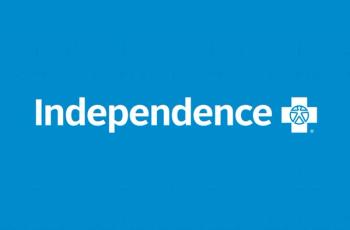
Acute Hospital-at-Home Holds Promise for Hospitals Facing Staffing Shortages
Organizations setting up hospital-at-home programs need to be aware of the associated risks and mitigation best practices.
While the United States continues to wrestle with the consequences of the COVID-19 pandemic, one thing remains clear: the hospital staffing shortage is persistent.
Press Ganey reports that 30% of RNs are at risk of leaving their organization.
The “Hospital at Home” (HAH) care delivery model may be one of the actions hospitals and health systems can take to alleviate some of the stress these shortages are putting on our already strained healthcare system. By making acute hospital-level care available to adults in their homes through dedicated paramedics and physicians, hospitals can free up some nurses to care for the most critically ill on-site, improve patient outcomes and increase patient satisfaction.
A safe and effective alternative to inpatient care
Some participating hospitals have demonstrated cost savings of 38%
HAH can also result in better care outcomes. It prevents patient exposure to foreign bacteria in a hospital and enables caregivers to see, track, and share the complete picture of a patient's condition and lifestyle.
Research has shown that, compared with patients receiving inpatient care, patients receiving HAH care had a shorter length of stay (3.2 days compared to 5.5 days in one study example), lower rates of 30-day hospital readmissions, emergency department visits, and skilled nursing facility admissions; and better ratings of care.
Hospital-at-home requirements
Recognizing its potential to help increase available bed capacity during the COVID-19 pandemic, the Centers for Medicare and Medicaid Services (CMS) expanded its Hospital Without Walls initiative to launch the “Acute Hospital Care at Home” program.
Since the program’s introduction, more than one hundred hospitals have received approval from Medicare to participate in hospital-at-home care.
Developers of the highly regarded Johns Hopkins Hospital at Home® care model say that hospitals and health systems taking a HAH program into consideration as a good fit for their organization should be able to answer yes to one or more of these questions:
- Is your health system experiencing problems from a lack of hospital capacity?
- Does your organization have home healthcare delivery capabilities?
- Do you have providers with an interest in caring for patients in the home setting?
- Does your health system have a significant volume of Medicare admissions with diagnoses of heart failure, community-acquired pneumonia, or chronic obstructive pulmonary disease?
- Does your institution value innovation when exploring new models of care?
[5]
A dedicated hospital-at-home team focused on best practices
Those who have successfully implemented HAH will tell you that, in addition to complying with
First, organizations must have a commitment from leadership and a team dedicated to HAH delivery. This includes physicians, nurses, paramedics, and staff trained in remote and at-home care nuances. This team must be solely dedicated to, and responsible for, the implementation of at-home patient care.
The dedicated team must thoroughly assess the patient’s appropriateness for the program. The ideal candidates cannot require intensive care and must be willing to participate in the program. Some patients express that they feel safer in a hospital setting and therefore would not be the best candidates for the program.
Critical consideration must also be given to the home setting's safety, security, and accessibility. Qualified staff must visit the home to make an honest assessment of any hazard that might put the patient at risk. This includes ensuring a stable internet connection for telehealth and remote monitoring to work consistently and confirming the patient is located no more than 30 minutes away from the hospital in case emergency care is needed.
It is also essential to conduct a thorough social assessment – interviewing those living at home, making sure there is a support system, and securing a commitment that a dedicated caretaker is available for the patient.
Promise beyond the pandemic
Organizations that engage in careful planning, establish a dedicated HAH team, define their patient selection process and perform thorough home environment assessments can implement successful and satisfying acute care at home experiences for patients and their families.
Proponents are hoping this trend continues beyond today’s critical need during the pandemic. They are placing their bets that the CMS waiver and increased awareness of HAH programs' success will help spur continued adoption and ultimately lead to a permanent CMS ruling.
Solveig Dittmann is a risk management and analytics manager at
[5] “Is Your Organization Ready for Hospital at Home?” Hospital at Home.
Newsletter
Get the latest industry news, event updates, and more from Managed healthcare Executive.






















































